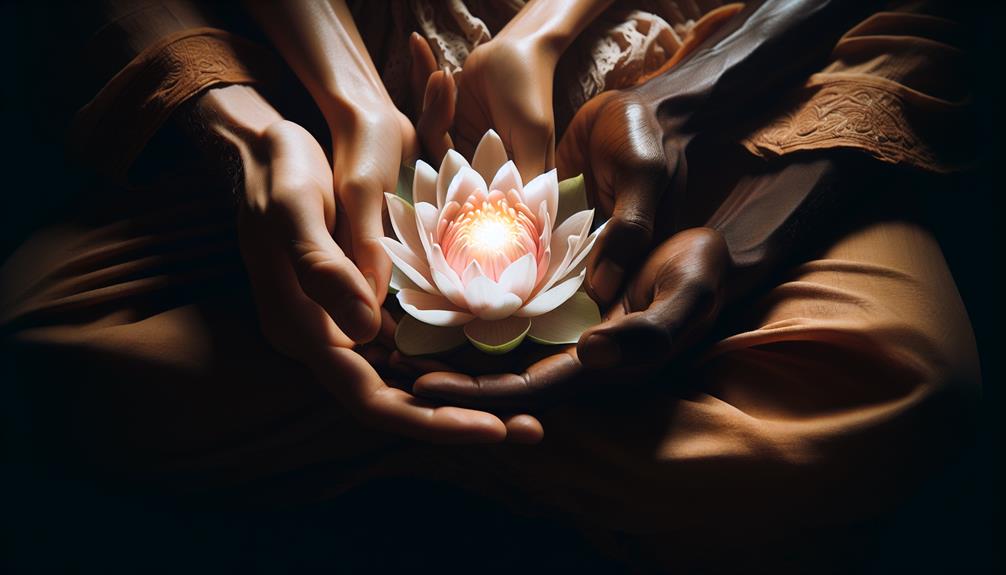What Is The Significance Of Kama
Kama, often defined as desire or pleasure, holds a significant place in various cultural and spiritual contexts, particularly within Hindu philosophy. Originating from ancient texts like the Kama Sutra and further explored in scriptures such as the Bhagavad Gita, the concept of Kama delves into the complexities of human emotions, relationships, and the pursuit of spiritual enlightenment.
What Is The Significance Of Kama
Understanding the multifaceted nature of Kama can offer profound insights into the human experience and shed light on the intricate balance between worldly desires and higher aspirations.
What Is The Significance Of Kama
Key Takeaways
- Kama is an integral part of Hindu philosophy, guiding individuals towards a balanced life.
- It shapes human relationships, fostering intimacy and understanding when approached mindfully.
- Kama promotes spiritual growth by encouraging self-reflection, compassion, and mindfulness.
- Modern interpretations include self-love, personal growth, and strengthening relationships for overall satisfaction.
Origins of Kama
Kama, the concept of desire and pleasure in Hindu philosophy, finds its origins in ancient Vedic texts and scriptures. Rooted in the rich tapestry of Hindu thought, Kama is deeply intertwined with the fundamental principles that shape the worldview of many followers of this ancient tradition. The Vedic texts, dating back thousands of years, provide the foundational understanding of Kama as a natural and essential aspect of human existence.
What Is The Significance Of Kama
Within the context of Hindu philosophy, Kama is seen as one of the four primary aims of human life, known as the purusharthas. Alongside dharma (duty), artha (prosperity), and moksha (liberation), Kama holds a significant place in guiding individuals towards a balanced and fulfilling life. It is through the pursuit and understanding of Kama that individuals can explore the depths of their desires and pleasures, ultimately leading to a profound sense of connection and belonging within themselves and the world around them. The origins of Kama serve as a foundational pillar in the intricate tapestry of Hindu philosophy, offering wisdom and guidance to those seeking a deeper understanding of the human experience.
What Is The Significance Of Kama
Kama in Hindu Scriptures
Rooted deeply in the ancient Vedic texts and scriptures, the concept of desire and pleasure, known as Kama in Hindu philosophy, is intricately interwoven with the fundamental principles governing human existence. Kama is not simply about physical pleasure; it encompasses emotional, mental, and spiritual desires as well. In Hindu scriptures, Kama is portrayed as a legitimate goal of human life, essential for a balanced and fulfilling existence.
What Is The Significance Of Kama
- Sacredness: Kama is viewed as a sacred pursuit when aligned with Dharma (righteousness) and Artha (wealth).
- Balance: The scriptures emphasize the importance of balancing Kama with other goals like Dharma, Artha, and Moksha (liberation).
- Symbolism: Kama is often symbolized through divine entities like Kamadeva, the god of love, highlighting its divine and profound nature.
- Evolution: The scriptures depict the evolution of Kama from physical desire to a higher form of spiritual union, illustrating its transformative power within individuals' lives.
Kama and Human Relationships
In the realm of human interactions and connections, the concept of Kama plays a significant role in shaping the dynamics of relationships. Kama, representing desire and pleasure, influences how individuals approach and engage with one another. It underpins the emotional and physical aspects of relationships, fostering intimacy, passion, and mutual understanding between people. Through Kama, individuals express their affection, attraction, and love for one another, creating bonds that are deepened by shared experiences and emotional connections.
What Is The Significance Of Kama
Human relationships are enriched by the presence of Kama, as it fosters empathy, compassion, and a sense of belonging. It encourages individuals to prioritize the well-being and happiness of their loved ones, nurturing a sense of reciprocity and care within relationships. Moreover, Kama enables individuals to communicate their emotions and desires openly, fostering trust and understanding between partners. When approached with respect and mindfulness, Kama can enhance the quality of human relationships, promoting harmony and fulfillment in interpersonal connections.
What Is The Significance Of Kama
Kama and Spiritual Growth
Exploring the depths of inner consciousness and enlightenment, the concept of Kama intertwines with spiritual growth, offering a pathway towards profound self-discovery and transcendence. Kama, in its spiritual essence, goes beyond mere physical desires and encompasses a deeper connection to the universal energy that binds all beings. In the realm of spiritual growth, Kama plays a vital role in guiding individuals towards a more meaningful existence and a heightened sense of awareness.
- Encourages Self-Reflection: Kama prompts individuals to delve into their innermost thoughts and emotions, fostering introspection and self-awareness.
- Fosters Compassion: Through Kama, individuals develop empathy and compassion towards others, leading to a more harmonious spiritual journey.
- Promotes Mindfulness: Practicing Kama involves being present in the moment, cultivating mindfulness and deepening one's spiritual connection.
- Ignites the Flame of Spirituality: Kama serves as a catalyst for igniting the flame of spirituality within individuals, guiding them towards enlightenment and transcendence.
Modern Interpretations of Kama
In modern times, the concept of Kama has evolved to encompass a broader spectrum of interpretations that reflect contemporary perspectives on the intertwining of desire, relationships, and personal fulfillment. While traditionally associated with romantic love and physical desire, modern interpretations of Kama extend beyond these boundaries to include self-love, emotional connections, and overall well-being. Below is a table highlighting three key aspects of modern interpretations of Kama:
| Aspect | Description | Importance |
|---|---|---|
| Self-Love | Focuses on nurturing one's own well-being and happiness. | Encourages individuals to prioritize self-care and growth. |
| Emotional Bonding | Emphasizes the significance of deep connections and empathy in relationships. | Strengthens the quality of relationships and overall satisfaction. |
| Personal Growth | Involves using experiences to learn and evolve as individuals. | Promotes continuous self-improvement and fulfillment. |
Frequently Asked Questions
How Does the Concept of Kama Differ From Western Ideas of Love and Desire?
The concept of kama differs from Western ideas of love and desire by its emphasis on a holistic approach to relationships, encompassing physical, emotional, and spiritual connections.
Unlike Western views that often prioritize romantic love, kama also includes the pursuit of aesthetic enjoyment, pleasure, and fulfillment in all aspects of life.
This broader perspective allows for a deeper understanding of human connections and the complexities of desire beyond traditional romantic ideals.
Are There Specific Rituals or Practices Associated With Cultivating Kama in Hindu Traditions?
In Hindu traditions, cultivating Kama involves various rituals and practices aimed at fostering love, desire, and fulfillment. These may include engaging in acts of devotion, such as puja (worship), reciting mantras, performing meditation, and participating in ceremonies that celebrate love and intimacy.
Through these practices, individuals seek to deepen their connection with their inner selves, their partners, and the divine, ultimately enhancing their understanding and experience of Kama.
How Does the Concept of Kama Relate to Gender and Sexuality in Hindu Culture?
Gender and sexuality in Hindu culture are deeply intertwined with the concept of kama. This aspect of desire encompasses not just physical intimacy but also emotional connection and spiritual fulfillment.
Through various narratives, scriptures, and teachings, the complexities of gender roles, sexual ethics, and societal norms are explored in relation to kama. Understanding these dynamics sheds light on the diverse expressions of love, passion, and intimacy within the Hindu tradition.
Is Kama Considered a Higher or Lower Form of Desire in the Context of Spiritual Growth?
In the context of spiritual growth, the consideration of kama as a higher or lower form of desire is complex. Some interpretations view kama as a lower form of desire, associating it with worldly attachments and distractions from spiritual progress.
Conversely, others see kama as a natural and necessary aspect of human experience, capable of leading individuals towards deeper connections and understanding. Ultimately, the significance of kama in spiritual growth may vary depending on individual beliefs and practices.
Are There Any Controversial or Conflicting Interpretations of Kama in Modern Society?
In modern society, interpretations of Kama can evoke controversy and conflicting views. Some view Kama as a natural and essential aspect of human experience, while others criticize it as promoting hedonism and materialism.
The debate often revolves around the balance between fulfilling desires and pursuing spiritual growth. These conflicting interpretations highlight the nuanced nature of Kama and its relevance in contemporary discussions on ethics, morality, and personal fulfillment.
Conclusion
In conclusion, the significance of Kama, as depicted in Hindu scriptures and philosophical texts, goes beyond mere physical desire and encompasses the realms of human relationships and spiritual growth.
From its origins in ancient Indian culture to modern interpretations, Kama serves as a reminder of the interconnectedness between physical pleasure, emotional connection, and spiritual enlightenment.
Just as the lotus symbolizes purity emerging from muddy waters, Kama represents the beauty that can arise from the complexities of human existence.

